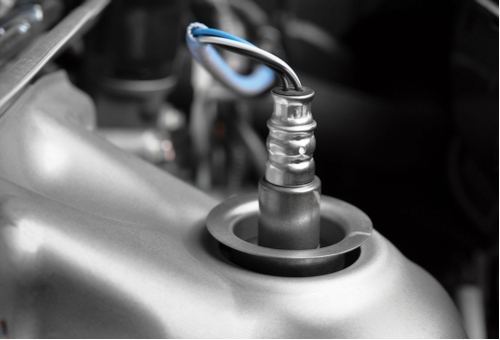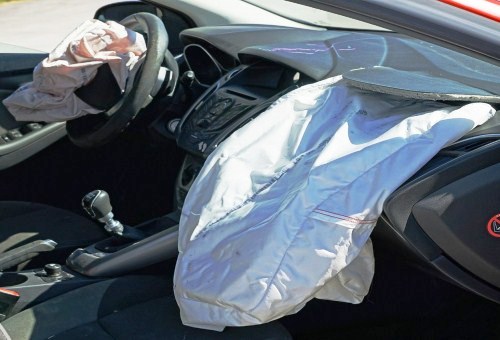
If you are a newly qualified mechanic working in an independent workshop, you will likely not have had much experience in diagnosing many tricky issues on vehicles of Japanese manufacture, which is not necessarily a bad thing. However, you should know that the process of diagnosing some faults on some vehicles of Japanese manufacture could sometimes differ significantly from diagnosing similar issues on vehicles made in Europe or the USA. Unfortunately, limited space precludes a comprehensive discussion on all such differences, but in this article, we will both discuss a few of the problems you are most likely to see on some Japanese-made vehicles, and provide some helpful diagnostic tips and tricks to help you resolve them. Let us start with-

P0171 – “System Lean-Bank 1” is probably among the five or so most common trouble codes you will encounter on Toyota Camry models from the 2007 to 2009 production years, but for the most part, only on Camry models fitted with the 1AZ-FE14 engine. What you are also likely to see, and especially if you are not the first technician to attempt a fix for the problem, is that both the MAF and AFR (Air/Fuel Ratio) sensors have been replaced, and sometimes, more than once.
This fact is a valuable diagnostic clue in itself, since the fault is persisting despite the sensor replacements. Therefore, all previous attempts at resolving the code fell into the "guess and replace" category, since nothing was tested to see if anything worked as it should. We are not going to make the same mistakes(s), so our first order of business is to test the AFR sensor to see if it works as intended.
On most Toyotas, an AFR sensor should generate a 3.3-volt signal voltage if the engine is in good mechanical repair and no issues like exhaust leaks, engine vacuum leaks, restrictions in the exhaust system, and/or MAF sensor defects are present. Bear in mind though that an AFR sensor should ideally be scoped to get a reliable reading because their sampling rates are much higher than the refresh rates of even the best multimeters. Moreover, since P0171 indicates a lean air/fuel mixture, there may also be a positive fuel trim value present, but more about that later.
Assuming then that the AFR sensor returns a 3.3-volt signal, we can induce a vacuum leak before the to see if the signal voltage increases, followed by introducing some propane or starting fluid into the intake tract to see if the signal voltage decreases. If the signal voltage increases, the AFR sensor detects a lean condition correctly. Conversely, if the signal voltage decreases, the AFR sensor detects a rich condition correctly. Note that depending on where in the inlet tract you induce the vacuum leak or introduce propane/starting fluid, the MAF sensor’s signal voltage may change during these steps, but we are not testing the MAF sensor at this point- we are testing the AFR sensor.
The next thing to test is the MAF sensor, and especially if the original sensor had been replaced with an aftermarket unit. There are several ways of testing MAF sensors, but on Toyota Camry models, the best method is to perform a volumetric efficiency test to verify that the MAF sensor is reporting the volume of air flowing through it correctly- or not, as the case may be.
You don't need a Toyota-specific scan tool for this: any generic scan tool with graphing capabilities will work if you can select the Calculated Load Parameter Identifier (PID) on it because the tool will require (at a minimum) inputs like the engine capacity, elevation above sea level, and ambient temperature. Leave the tool connected and take the vehicle for test drive, but note that the best results are obtained by making several WOT throttle inputs during up-shifts or gear changes from first to second gear because this causes more air to flow through the MAF sensor in a shorter time than is possible to do during up-shifts in higher gears.
Most scan tools will typically display two traces; one trace will be the desired volumetric efficiency, while the other trace will be the actual volumetric efficiency, but note that interpreting the data can be tricky. For instance, if the two traces match each other closely the intake system, including the MAF sensor, is good. However, since P0171 is present, and is likely to be accompanied by a positive fuel trim value, the traces will not match closely. If this is the case, the degree of deviation from the ideal or desired volumetric efficiency is usually a good indicator of the size of the vacuum leak.
However, a difference between the desired and actual volumetric efficiencies can also be an indication of a defective MAF sensor, but since the AFR sensor showed appropriate reactions to both induced lean and rich conditions, a defective MAF sensor is unlikely to be the cause of the problem, so you’d need to dig a little deeper.
Fortunately, though, this writer has had many encounters with P0171 and positive fuel trim values on 2007/2009 Toyota Camry models. In almost all cases, the drivers/owners of problem vehicles also complained of a hard brake pedal and poor braking performance, and often also of the idling speed fluctuating when the brakes are applied repeatedly. These are typical signs of a leaking or ruptured diaphragm in the brake booster, which explains the problem and all the symptoms.
Think about it: since the brake booster draws its vacuum from a point after the MAF sensor, the unmetered air that enters the engine through a leak in the booster diaphragm does not affect MAF sensor readings, nor does it affect volumetric efficiency test results in meaningful ways. Therefore, if the AFR sensor’s signal voltage is 3.3 volts while there is a positive fuel trim value present, it means that the ECU is already enriching the air/fuel mixture to compensate for the lean mixture caused by the leaking brake booster diaphragm.
Thus, the lean condition was recognized by the AFR sensor, which then caused the ECU to enrich the air/fuel mixture to Lambda 1(stoichiometric) or to a value very close to it. This fact explains the positive fuel trim value and the AFR sensor’s 3.3-volt signal voltage, which is the result of the ECU maintaining the air/fuel mixture at stoichiometric through applying a constant positive fuel trim correction. Additionally, a leaking brake booster diaphragm causes fluctuations in the intake manifold pressure when the brakes are applied repeatedly, which explains the fluctuations in the idling speed.
Replacing the brake booster resolves P0171 and extinguishes the MIL light, and therefore, all diagnostic procedures for P0171 and/or related lean-running codes on Camry models dating from 2007 onwards should ideally start by checking the brake pedal “feel”, and blanking off the brake booster’s vacuum port to see if the problem resolves itself.

These codes are defined by Toyota as B1785 – “Front Occupant Classification Sensor LH Collision Detection”, and B1650 – “Occupant Classification System Fault”, and this particular combination of body codes are/were common on various Toyota models dating from the early 2000s.
The most common symptom of this pair of codes is an illuminated SRS warning light, but the problem is that the warning light cannot be extinguished by simply clearing the codes; in fact, repeated attempts to clear the codes might deploy one or more airbags.
In practice, code B1650 usually sets when the airbag sensor assembly centre receives a signal from the Occupant Classification control module. If the SRS system as a whole is fully functional, the relevant airbag(s) will deploy if the impact upon a front or rear impact sensor is strong enough. However, even if the impact was strong enough to deploy one or more airbags, the airbag sensor assembly centre might be defective and therefore, it might deem the impact insufficient to deploy airbags, with the result that code B1650 will set and the SRS warning light will be illuminated.
The above is the theory, so in practice, you might be tempted to a), suspect a faulty impact sensor, and b), to start removing body panels and bumpers to gain access to the defective sensor. However, the fact is that many Toyota models from the early 2000s were particularly susceptible to electrical issues caused by run-down batteries, incorrect jump starting procedures, and even simple battery replacements. In many cases, these issues corrupted the programming of either the Occupant Classification control module or the airbag sensor assembly centre- or sometimes, both.
This condition can sometimes go unnoticed for years, until a minor collision with a solid object arms the SRS system. However, the airbag sensor assembly centre is the final arbiter on whether or not airbags should be deployed, but since some programming might have been lost or corrupted, the airbags will usually not deploy. Hence, the warning light and the presence of code B1650.
As a practical matter though, code B1785 is the primary code while code B1650 is the secondary code, which means that the only way to resolve this airbag issue is to resolve code B1785, and the only way to do that is to reprogram the Occupant Classification control module. This process is known as a “Zero Point Calibration”, and among other things, it involves realigning theMillimetre Wave Radar sensorto the vehicle’s thrust line and fixing programming errors in the SRS system.
The bad news is however that this procedure can only be performed with Toyota’s Techstream equipment*, and Toyota-specific calibration targets. However, the upsides are a), that you can explain the exact nature of the problem to your customer, and b), that you won’t make the problem worse by removing bumpers and body panels, which could require extensive and very expensive reprogramming and/or recalibration of all the ADAS systems on the vehicle.
* While you may be able to access the required software here if you are willing to pay the subscription cost, be aware that this software is generally not compatible with non-Techstream equipment.

DTC P0507 is defined as “Idle Air Control System - RPM Higher Than Expected”, and although it affects almost all petrol vehicles at some point in their lives, this code is arguably not only more common on Nissan models, but also more difficult to diagnose and resolve than on most other vehicle makes.
On many Nissan models from about 2007 to about 2010/11, this code typically sets after a throttle body replacement, or after a throttle body service/cleaning procedure and in almost all cases, no warning lights will be illuminated despite an active trouble code being present. Visual inspections of the inlet tract usually do not show any obvious problems, and since adjusting the idling speed is not possible, many technicians simply refer the vehicle to the dealer or a competing workshop to resolve the issue.
The problem with P0507 on many Nissan models, including many late-model Nissans, is this; while it is often possible to perform an idle speed relearning procedure with the software that is included in most high-grade generic scan tools, the idling speed is often too high after a throttle body replacement/service for the relearning process to initialise.
However, there is an easy solution. Simply switch off the engine, and disconnect 50% of the fuel injectors; i.e., two injectors on a four-cylinder engine, and three injectors on a six-cylinder engine, but not two adjacent injectors on a four-cylinder engine, nor three injectors on the same bank on a six-cylinder engine. The object of this exercise is to allow the engine to still start and run, and even though it will run very badly, it will run slowly enough for the idle speed relearning procedure to begin and run to completion, which will not happen unless you force the engine into a lower idling speed.
When the idle speed relearning procedure is complete, switch off the engine, reconnect all the injectors, and verify that the idling speed is now both correct and stable. Also, don’t forget to clear all the misfire and/or cylinder power contribution codes that will have set as a result of disconnecting injectors.
At their cores, Japanese vehicles are no different from European, American, or Korean cars, but it is easy to develop tunnel vision when you are chasing down problems on vehicles you may not be familiar with. Nonetheless, there is an easy remedy for tunnel vision; simply recognize that you have it, and then step back and reevaluate the situation. Throwing parts at a problem does not solve anything; in fact, doing this could lead you deeper down a rabbit hole and further from a solution than you were when you first started looking for the problem.
A more productive approach is to follow the cause and effect route. For something to happen, something else must happen first, and while you may not always be overly familiar with what needs to happen first, the solution can more often than not be found by applying some critical thinking, and if that fails, to reduce the problem to its simplest form. Once you do this, you become more aware of the need to "test, don't guess", which is almost invariably the shortest route to resolving a problem- regardless of where a vehicle was made.